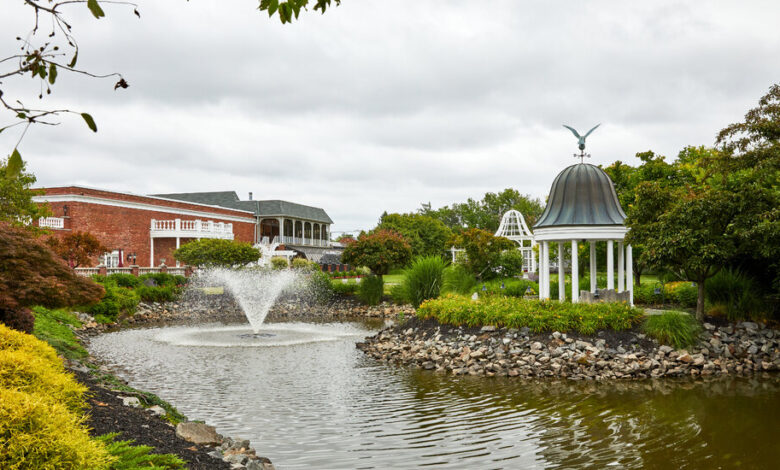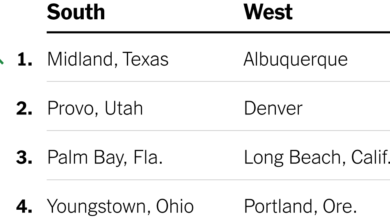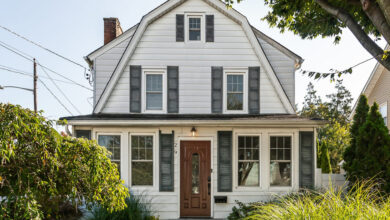What It’s Like to Live in Hanover Township, NJ

[ad_1]
Tired of the scorching weather and the constant threat of wildfires, Andrew and Carolyn Trexler decided early this year that it was time to abandon their five-year experiment of living in Northern California. So they left to return to their home turf of North Jersey. The only problem was securing a house in a highly competitive market.
After months of looking online and seeing houses come on and go from the market in days, the Trexlers and their two children, 11 and 14, took a weekend trip back East in early May. They looked at 10 houses and put in offers — well above the asking prices — on four. Each time, they were outbid.
“It’s such an emotional roller coaster, wondering how much over asking you’re going to have to bid, only to be told you’re No. 2,” said Mr. Trexler, 46, a cardiac nurse who had a new job at St. Clare’s Denville Hospital, in Denville, N.J., with a June start date. “We were at the point where we thought we’d just rent for a year and see if the inventory would go up or interest rates would go down. We were desperate.”
Then they got word that the top offer on a house they’d bid on in Hanover Township had fallen through, and that their second-place offer — $60,000 over the $610,000 asking price — was now sufficient. In mid-June, they closed on the four-bedroom, two-and-a-half-bath split-level on 1.2 acres, and a few days later they were signing up for Hanover’s Bee Meadow Pool, library cards and new driver’s licenses. Their heads are still spinning.
“Climactically and culturally, I just didn’t see us putting down permanent roots in California,” said Mr. Trexler, who grew up in nearby Summit, N.J. (Ms. Trexler, 46, grew up in East Hanover.) “It’s been so easy to reassimilate into what we had before. Our friends from before have been so welcoming.”
Those same friends, he said, “thought we were crazy to move, and even more crazy to come back, especially at this time, when the market is so tough.”
While many North Jersey suburbs have been experiencing a tightening market, with shrinking inventory and growing demand, Hanover is really feeling the pinch. This Morris County township with about 15,000 residents has highly rated schools and some of the lowest property taxes in the area — and many buyers are scrambling to find a house there.
“I tell my buyers, if you want this house, you have to make yourselves as attractive as possible,” said Elizabeth Harper, a real estate agent with Keller Williams Metropolitan, who has lived in Hanover for 41 years. “You’ve got to give whatever you have, and still be prepared for disappointment.”
For those already living in Hanover and seeking more space, Ms. Harper has different advice: “People ask me, ‘Should I move or add on?’ I say, ‘Add on — it’s a tough market.’”
When Ryan and Lauren Vanderhoef bought their three-bedroom home eight years ago, the market wasn’t nearly so challenging. Offering the asking price of less than $500,000, they were able to buy a 1950s split-level in a neighborhood not quite a mile from Ms. Vanderhoef’s teaching job at Hanover Park High School, and within walking distance of Progressive Gardens, the Vanderhoef family’s garden center and landscaping business in Cedar Knolls, N.J.
Mr. Vanderhoef, 47, who grew up in Hanover, wanted to stay put when he and Ms. Vanderhoef started a family. “We love this town,” he said. “Our daughter is 5, and now we’re seeing her friends’ parents come into the store. It’s a nice, family-oriented place.”
What You’ll Find
Bisected by Interstate 287, the 10.8-square-mile township is divided into two communities: Whippany, to the east of the highway, and Cedar Knolls, to the west. Those are the names most residents use when asked where they live.
Most of the larger parks are in Whippany, where houses and lots tend to a bit larger, too. Still, Hanover’s housing is relatively homogeneous, comprising split-levels, raised-ranch houses and expanded Cape Cods, most built from the 1950s to 1970s, with a few pockets of newer homes and some townhouse and apartment complexes.
“You don’t see huge properties in Hanover, and you’re not getting anything new around here,” said Ryan Bruen, 36, a real estate agent with Coldwell Banker. “When you move to Hanover, you kind of know what you’re going to get.”
Most commercial activity is along Whippany Road and busy Route 10, where big-box stores mix with office parks housing corporations like MetLife and Bayer. But like many suburban New Jersey communities that expanded after World War II, Hanover has no town center. In 2019, the township set out to change that, rezoning a former paper-mill site along the Whippany River to create River Park Town Center.
When completed, the 88-acre site will have 11 residential buildings with 967 housing units; 80,000 square feet of retail space; an amphitheater; and an extension of the Patriots’ Path trail along the river. The first 81 luxury apartments, in a building called 34 Eden, will open this summer, said Kurt Vierheilig, the director of design for DMR Architects, which was responsible for the design, with completion expected to take four years.
What You’ll Pay
In mid-June, there were 14 homes for sale in Hanover, from a two-bedroom, two-bath townhouse listed for $385,000 to three new houses listed for around $1.4 million apiece. With such scarce inventory, buyers usually offer significantly more than the asking price, said Ms. Harper, of Keller Williams Metropolitan, who recently sold a five-bedroom, four-bath house for $1.335 million — $110,000 over the asking price.
The average sale price this year, through the end of May, was $616,812, according to the Garden State Multiple Listing Service — up from $575,656 during the same five-month period in 2022.
Rents for apartments in complexes like Woodmont Knolls and Sterling Parc, in Cedar Knolls, or Whippany Village run from about $2,600 a month for a one-bedroom to $4,000 a month for two bedrooms.
The Vibe
During the summer, the place to be is Bee Meadow Pool, a large municipal swimming complex in the 89-acre Bee Meadow Park, with water slides, table games and a concession stand. Seasonal memberships for Hanover residents in 2023 start at $294 for singles or $451 for families; nonresidents pay higher rates. In the winter, pajama-clad visitors descend on the Whippany Railway Museum to catch a ride on the Polar Express and meet Santa; other trips in the historic train cars are offered throughout the year.
Hanover has a handful of restaurants, but younger residents seeking more active nightlife travel to the bustling downtown in neighboring Morristown. Ashley Haynes, 24, a nurse at Morristown Medical Center, shares a two-bedroom condominium in Hanover with her brother that their parents bought two years ago for $350,000. Going to Morristown to meet her friends at night requires about a $10 Uber ride, she said, but she’s happy to live “in a little bit more of a suburban environment, where it’s quieter and cleaner, and I can actually see some nature.”
The Schools
Hanover Township has three elementary schools, each with about 230 to 300 students: Bee Meadow School, Mountview Road School and Salem Drive School. About 475 students in sixth through eighth grade attend Memorial Junior School, and 610 students are enrolled at Whippany Park High School, where more than 60 percent of students take one or more of the school’s 26 Advanced Placement courses.
The average SAT scores in 2021-22 were 561 in reading and writing and 557 in math, compared with state averages of 538 and 532. The high school has a highly regarded performing arts program and marching band, and a choir that performs at Carnegie Hall.
Private school options include the Morristown Beard School, for students in sixth through 12th grade, and the Academy of Saint Elizabeth, a college preparatory high school in Florham Park, and the oldest secondary school for women in New Jersey.
The Commute
Hanover is about 30 miles west of New York City, connected by several major highways.
New Jersey Transit provides direct train service to Penn Station in Manhattan from Convent Station in Morris Township, a few miles south; trips take 55 to 65 minutes and cost $12.25 one way or $353 for a monthly pass.
New Jersey Transit’s bus No. 73 stops along Route 10 in Whippany, taking riders to Newark, where they switch to the No. 108 and continue to Port Authority. The whole ride takes about two hours and costs $9.80 one way or $251 a month.
The History
A portion of the first televised broadcast originated in Whippany. On April 7, 1927, a speech by Herbert Hoover, then Secretary of Commerce, was transmitted from Washington, D.C., to the Bell Laboratories Building in New York City; immediately afterward, the performance of a vaudeville comedian filmed at Bell Laboratories’ Whippany studios was transmitted to the company’s New York offices. The following day, a front-page story in The New York Times proclaimed, “It was as if a photograph had suddenly come to life and begun to talk, smile, nod its head and look this way and that.”
For weekly email updates on residential real estate news, sign up here.
[ad_2]
Source link






